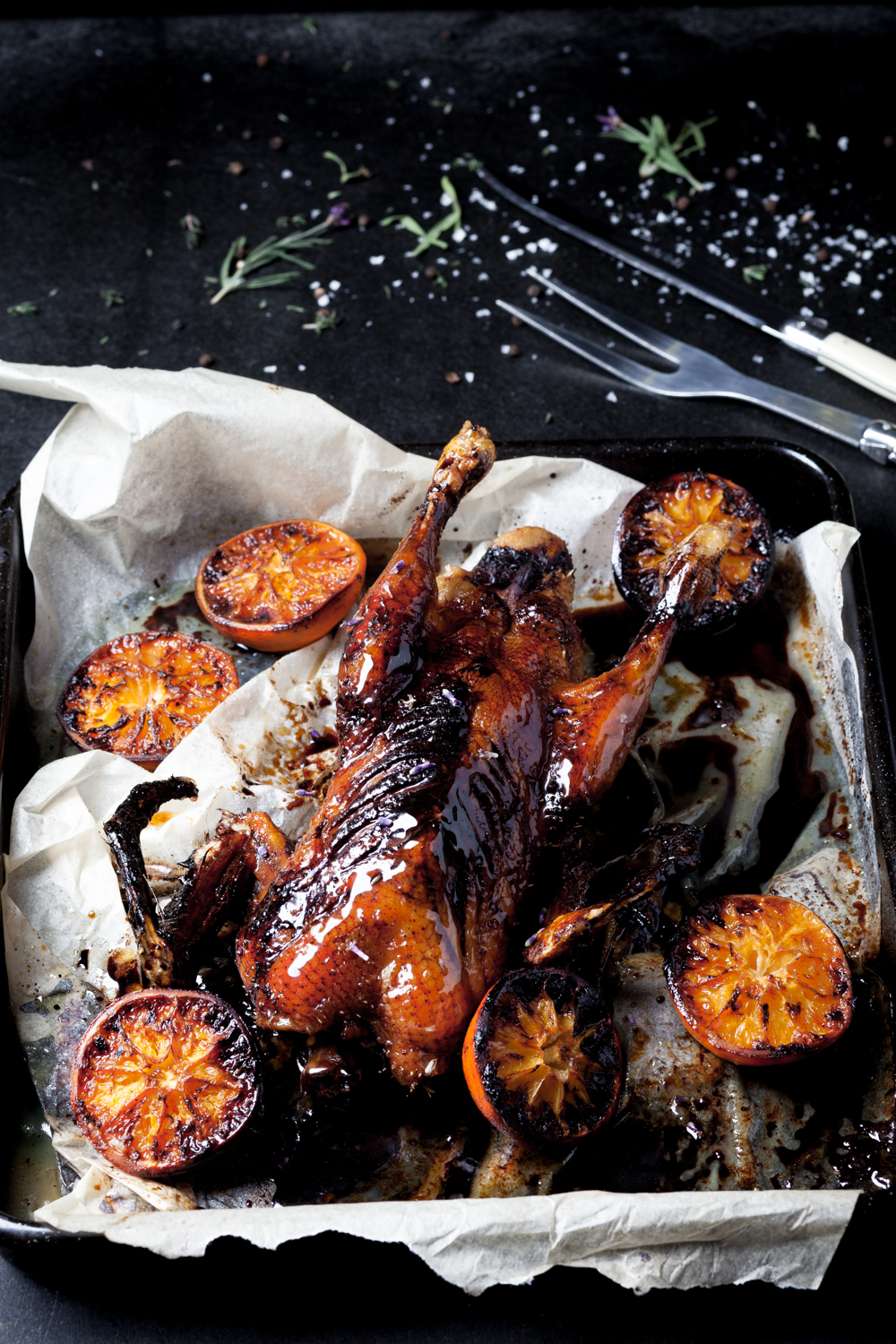'The white Aylesbury duck is, and deservedly, a universal favourite. Its snowy plumage and comfortable comportment make it a credit to the poultry-yard, while its broad and deep breast, and its ample back, convey the assurance that your satisfaction will not cease at its death. In parts of Buckinghamshire, this member of the duck family is bred on an extensive scale; not on plains and commons, however, as might be naturally imagined, but in the abodes of the cottagers. Round the walls of the living-rooms, and of the bedroom even, are fixed rows of wooden boxes, lined with hay; and it is the business of the wife and children to nurse and comfort the feathered lodgers, to feed the little ducklings, and to take the old ones out for an airing. Sometimes the "stock" ducks are the cottager's own property, but it more frequently happens that they are intrusted to his care by a wholesale breeder, who pays him so much per score for all ducklings properly raised. To be perfect, the Aylesbury duck should be plump, pure white, with yellow feet, and a flesh coloured beak'. — Isabella Beeton, Mrs Beeton's Book of Household Management, 1861
Perhaps the most famous Aylesbury duck was Beatrix Potter’s Jemima puddle duck, although her story was based in Cumbria rather than Buckinghamshire, the county famous as the centre of Aylesbury Duck production in the 19th and early 20th century.
The past 100 years saw the Pekin duck and various crosses become the preferred breeds for commercial production. 20th century farming production changed following the two world wars & the consequential austerity creating the need for efficient birds that matured faster & faster – a trait which the Pekin had the edge on over the Aylesbury. The traditional Aylesbury cottage industry model of individual households raising a breeders ducks fell into decline as intensive farming proliferated.
As with many of our traditional breeds of farm animal, it’s been the mission of many small scale farmers to rediscover some of our forgotten foods, breeds that were historically popular for superiour eating quality that fell into decline because they took slightly longer to mature.
The initiative of farmers diversifying, the undeniable quality compared to intensively farmed meat and the cost efficiency of buying directly from the farm gate have all helped foster a growing trend towards a new model of extensive farming. Pubs & restaurants are increasingly choosing to source directly from farms, cutting out the middleman as customers, chefs & restauranteurs become more knowledgeable about our amazing heritage being re-discovered.
John & Jane Turner have been farming the 900 Acres around Bancroft Lodge near Oakham since the 1970’s. In 2015 they decided to diversify and started rearing free range pure bred Aylesbury ducks, one of only a handful of producers nationally.
As well as supplying to the Bewicke Arms In Hallaton you can also buy this superb duckling direct from the farm gate.
Bancroft Lodge, Ayston Road, Ridlington, Oakham,Rutland LE15 9AH 01752 823 341
Roast Bancroft Farm Duckling glazed with Leicestershire Honey, Orange & Lavender
Ingredients
1 5lb Aylesbury duckling
3 Oranges
4 tbsp. Leicestershire honey
50g Soft brown sugar
250ml Water
1 tsp Lavender flowers
Method
To make the glaze, peel the oranges & juice them.
In a small saucepan bring to a simmer the juice & peel with the honey, sugar, water & lavender, remove from the heat & leave to infuse for 10 minutes before straining. Put the strained glaze back into the saucepan and reduce to a syrupy consistency.
Use a sharp knife to score the skin of the duckling breasts several times taking care not to cut into the flesh. This will allow the fat to render & melt away resulting in a lovely crispy skin. Season & place in a roasting tin in a preheated oven at 150C
After 30 minutes flip the duckling over so it is breast side down in the roasting tin. After a further 30 minutes flip the duckling over again. Repeat this flipping a further 2 times, after a total of 2 hours in the oven remove the tray from the oven & turn up to 210C
Carefully pour any rendered duck fat from the tray into a heatproof container (you can save this for your Sunday roasties!). Liberally brush the glaze onto the duckling with a pastry brush. Return to the oven for a further 15-20 minutes basting with more of the glaze every 5 minutes.
Remove from the oven and allow to rest for 15-20 minutes before carving.

